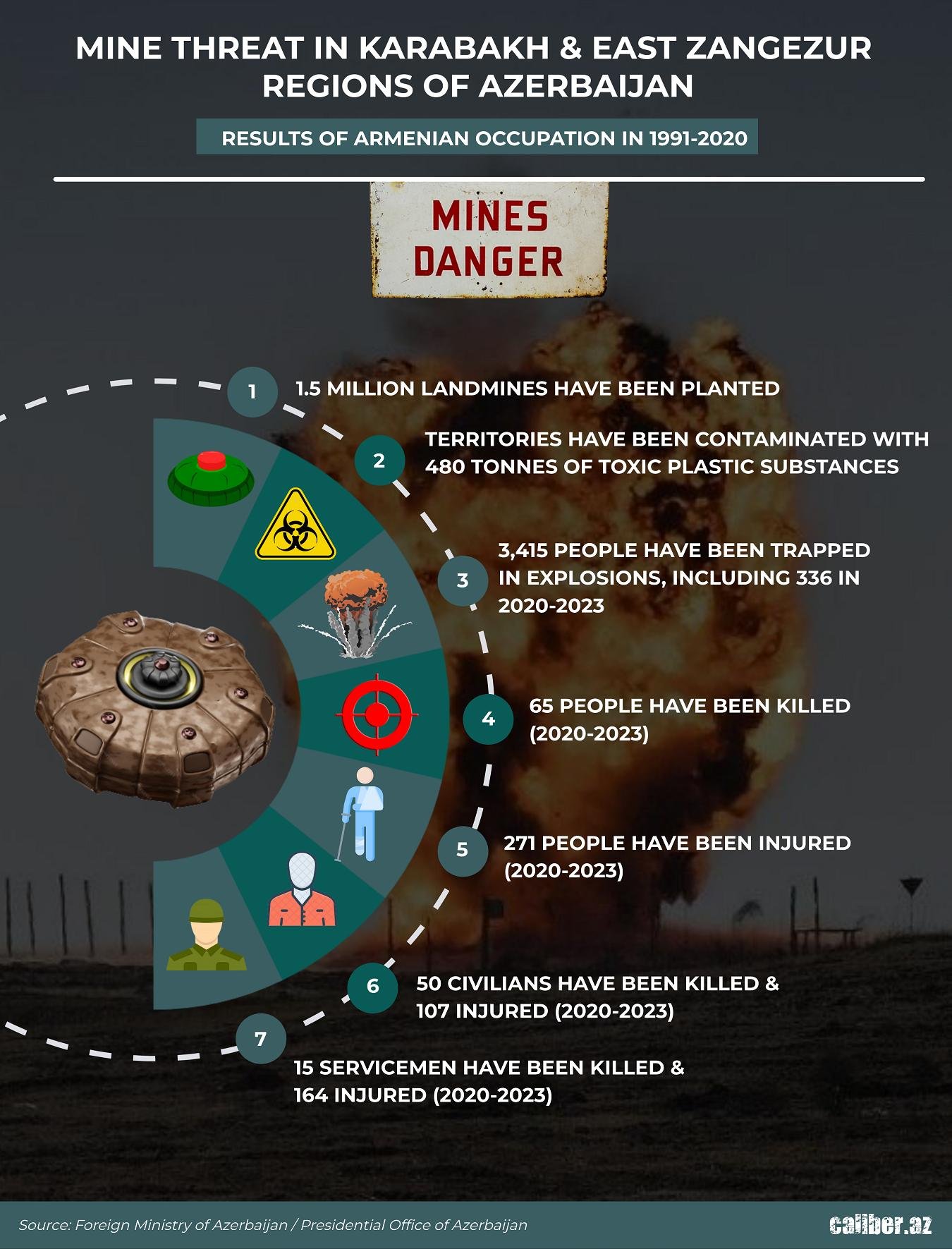Deadly mine threat still prevalent in Azerbaijani territories Caliber.Az infographic
The Foreign Ministry of Azerbaijan resumed on November 3 the calls on the international community to take urgent measures for eradicating the ongoing mine threat in the Azerbaijani lands.
The ministry's statement followed a mine explosion in the country's Terter region on the same day.
As a result of the incident, a 24-year-old civilian got his leg amputated.
"Since the end of the conflict, 336 Azerbaijanis became victims [of mine blasts]. Urgent measures should be taken to eradicate this threat," the ministry wrote on X, per Caliber.Az.

The Karabakh (Garabagh) and East Zangazur regions of Azerbaijan have been heavily mined by Armenia’s forces since the 1990s. Following the dissolution of the Soviet Union in 1991, Armenia launched a full-scale military assault against Azerbaijan. The devastating war persisted until a ceasefire was signed in 1994 and led to Armenia’s occupation of 20 per cent of Azerbaijan’s internationally recognized territories. During the conflict, over 30,000 Azerbaijanis lost their lives, and one million were forcibly displaced from their homes in a brutal ethnic cleansing campaign perpetrated by Armenia.
On September 27, 2020, the long-standing conflict between the two countries rekindled after Armenia’s forces, illegally deployed in the occupied Azerbaijani territories, shelled both military positions and civilian settlements in Azerbaijan. Over the course of a 44-day counter-attack, Azerbaijani forces liberated more than 300 settlements, including the cities of Jabrayil, Fuzuli, Zangilan, Gubadli, and Shusha, from Armenian occupation. The war ended with the signing of a tripartite statement on November 10, 2020, by Armenia, Azerbaijan and Russia. Under the statement, Armenia also returned the occupied Aghdam, Kalbajar, and Lachin districts to Azerbaijan.
Since the cessation of hostilities, the Azerbaijani government has been actively engaged in demining operations in the liberated territories to facilitate the return of internally displaced Azerbaijanis to their homes. However, these efforts face significant challenges due to Armenia’s refusal to provide maps detailing the locations of landmines.
According to the Azerbaijani National Agency for Mine Action, up to 1.5 million landmines have been planted in the once-occupied lands of Azerbaijan during the years of Armenian occupation, leading to the contamination of those territories with 480 tons of toxic plastic substances.
Although the Armenian side provided some of the minefield maps, they are only 25 per cent effective in aiding demining efforts.
International experts estimate that it will require nearly 30 years and $25 billion to fully address the issues associated with demining in the region.








